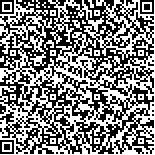| 引用本文: | 娄高僮,罗源,陈渔,陈思宇.2023.我国地表矿物质颗粒物的粒度分布与来源[J].地球环境学报,14(2):145-155 |
| LOU Gaotong, LUO Yuan, CHEN Yu, CHEN Siyu.2023.Grain size distribution and source of surface mineral particles[J].Journal of Earth Environment,14(2):145-155 |
|
| |
|
|
| 本文已被:浏览 2794次 下载 1727次 |

码上扫一扫! |
|
|
| 我国地表矿物质颗粒物的粒度分布与来源 |
|
娄高僮,罗源,陈渔,陈思宇
|
|
1. 兰州大学 大气科学学院 半干旱气候变化教育部重点实验室,兰州 730000
2. 湖南省气象台,长沙 410118
|
|
| 摘要: |
| 下垫面的地表矿物质颗粒物是大气气溶胶的源和汇,对生物地球化学循环、环境状况和人体健康产生影响。下垫面地表矿物质颗粒物的粒度分布是表征颗粒行为的重要参数,颗粒物的物理性质、化学性质和环境学性质等都与粒径有关。为探究人为下垫面(城市铺装道路、农村土路和农田等)和自然下垫面(沙漠和戈壁)地表矿物质颗粒物的粒径分布,并分析其影响因素,对城市铺装道路、农村土路、裸露农田、沙漠和戈壁下垫面的地表矿物质颗粒物进行粒度研究。结果表明:从沉积物中值粒径来看,城市铺装道路表现为佛山市南海区(254.9 μm)>杭州市桐庐县(247.5 μm)>北京市(201.3 μm)>
南平市延平区(178.7 μm)>兰州市(65.5 μm);赣州市湖江镇农村土路为131.3 μm;兰州市榆中县裸露农田为21.1 μm;沙漠和戈壁表现为腾格里沙漠(272.7 μm)>塔克拉玛干沙漠(121.9 μm)。总体来说,地表矿物质颗粒物的粒度分布与人类活动、地理位置、风速和季节等因素密切相关,人类活动对粒度分布的影响因人类活动的复杂而难以明确,风速不同将裹挟不同粒径颗粒物,不同季节风速与风向不同,不同地理位置人类活动与风速存在差异。样本中,除兰州市外,城市铺装道路的地表矿物质颗粒物主要来自土壤、工地和交通活动等局地源,远距离传输来的颗粒物较少;沙漠沉积物的来源为单一的局地物质;沙漠沉积物中重金属含量表现出随粒径变大而减小的趋势。 |
| 关键词: 地表矿物质颗粒物 粒度分布 沙漠 城市铺装道路 农村土路 重金属 |
| DOI:10.7515/JEE222042 |
| CSTR: |
| 分类号: |
| 基金项目:国家自然科学基金项目(U2242209,42175106,91837103);中国博士后科学基金(2020M681156) |
|
| Grain size distribution and source of surface mineral particles |
|
LOU Gaotong, LUO Yuan, CHEN Yu, CHEN Siyu
|
|
1. Key Laboratory of Semi-Arid Climate Change, Ministry of Education, College of Atmospheric Sciences, Lanzhou University, Lanzhou 730000, China
2. Meteorological Observatory of Hunan Province, Changsha 410118, China
|
| Abstract: |
| Background, aim, and scope Surface mineral particles on the land cover are the source and sink of atmospheric aerosols, which make significant contributions to biogeochemical cycle, environmental conditions and human health. The particle size distribution of surface mineral particles on the land cover is a kind of vital parameter to characterize particle behavior, and the physical, chemical and environmental properties of particulate matters are related to particle size. Due to the influence of natural and anthropogenic activities, the formation, characteristics, release and transportation of surface mineral particles on distinct land covers vary significantly. For the purpose of revealing the impact of surface mineral particles on natural and anthropogenic disturbed land covers, the particle size of surface mineral particles on the bottom surface of urban paved roads, rural dirt roads, deserts and farmland is studied in this paper. Materials and methods Sand grains with a depth of 0—1 cm on the surface are collected uniformly in the desert; urban paved roads, rural dirt roads and bare farmland are collected using brushes and shovels with approximately 30 g per sample. For urban paved road sampling, the specific sampling area is an area near the curb (1—2 m). For farmland and rural dirt road sampling, the winter fallow period was chosen. The collected samples are naturally air-dried for 24 h, as well as the samples are filtered through a clean 20-mesh standard inspection sieve to remove plant debris, hairs, pebbles and other debris. The filtered samples are stored in sealed bags and used as the original samples. The particle size tests are tested by Malvern Mastersizer 2000 laser particle size analyzer and the composition tests are performed by a Magic PW2403 X-ray fluorescence spectrometer. Results As for the size of median diameter, in terms of urban pavement, Nanhai District of Foshan City (254.9 μm)>Tonglu County of Hangzhou City (247.5 μm)>Beijing City (201.3 μm)>Yanping District of Nanping City (178.7 μm)>Lanzhou City (65.5 μm); while for deserts and gobi, Tengger Desert (272.7 μm)>Taklimakan Desert (121.9 μm). In regard to rural dirt roads, the rural dirt roads in Hujiang Town of Ganzhou City is 131.3 μm. As far as the bare farmland is concerned, the farmland in Yuzhong County of Lanzhou City is 21.1 μm. The particle size distribution curve of urban paved road sediment exhibits a bimodal distribution in Lanzhou City, Gansu Province. The Taklimakan Desert shows a triple-peaked distribution. Ganzhou City, Jiangxi Province presents a bimodal distribution. Moreover, the agricultural soils in Tengger Desert and Yuzhong County, Lanzhou City illustrate a single-peaked distribution. Discussion (1) Beijing employs the characteristics of small median diameter, high content of fine particles, and low volume fraction in areas with low population density. The median particle size in Beijing is 219.2 μm in winter and 187.5 μm in summer, and the proportion of fine particles in summer is higher than that in winter. The particle size distribution of urban paved road sediment is closely related to the wind speed size and geographical location, and the particle size distribution is concentrated when the wind speed is high. When the wind speed is high the wind speed is low and there are many sand sources around, the proportion of fine particles is high and the particle size is small. (2) Surface mineral particulate matter in Beijing, Nanhai District, Foshan City, Tonglu County, Hangzhou City, and Yanping District, Nanping City, mainly stems from local sources such as soil, construction sites, and traffic activities. The sources of Lanzhou City are more complex, and the atmospheric circulation transports the mixture of local and regional materials. The Taklimakan Desert and Tengger Desert have only a single source, and there are relatively many foreign substances in the Taklimakan Desert. (3) The grain size effect of heavy metals in desert sediments is significant, and the content shows a tendency to decrease gradually with the increase of particle size. Compared with Shanghai and other cities, the particle size effect of heavy metals in paving road sediments in Beijing and Lanzhou is not obvious, which may be influenced by surrounding sand sources. Conclusions The particle size distribution of surface mineral particulate matter is closely related to human activities, geographical location, and seasons. Surface mineral particles from urban paved roads come from local sources such as soil, construction sites, and traffic activities, with less particulate matter coming originate from long-distance transport, and desert sediments come from a single local source. In addition, with the increase of particle size, the content of heavy metals in desert sediments shows a downward trend. Recommendations and perspectives In this paper, the differences of geography, economic development, and anthropogenic activities were taken into account when selecting sampling locations. However, owing to the difficulty of collecting samples on a large scale, there are few data at some sample points, which need to be further improved in future research. |
| Key words: surface mineral particles grain size distribution desert urban paved roads rural dirt roads heavy metal |
|
|
|
|